With the NBA season starting in about a month, one thing to watch is whether last year's promising rookies will hit the "rookie" wall in their second season.
Hitting the rookie wall is a phrase used to describe players who see a sudden drastic drop in their performance, especially after an extraordinary season. Furthermore, it usually happens to those who have shown potential to become foundation players for their teams.
Luka Doncic and Trae Young are probable victims
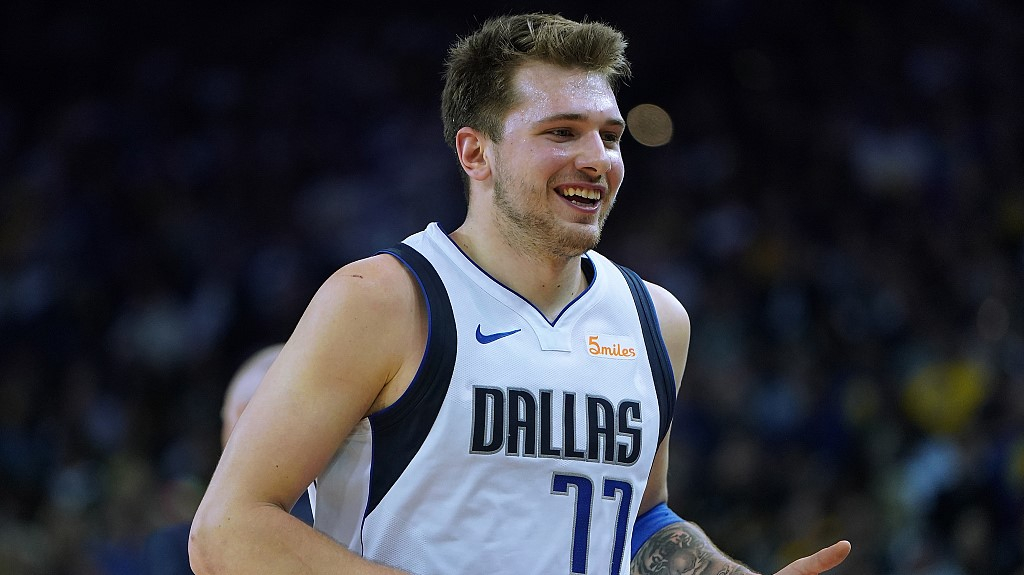
Luka Doncic of the Dallas Mavericks seems happy in the game against the Golden State Warriors at the Oracle Arena, March 23, 2019. /VCG Photo
Luka Doncic of the Dallas Mavericks seems happy in the game against the Golden State Warriors at the Oracle Arena, March 23, 2019. /VCG Photo
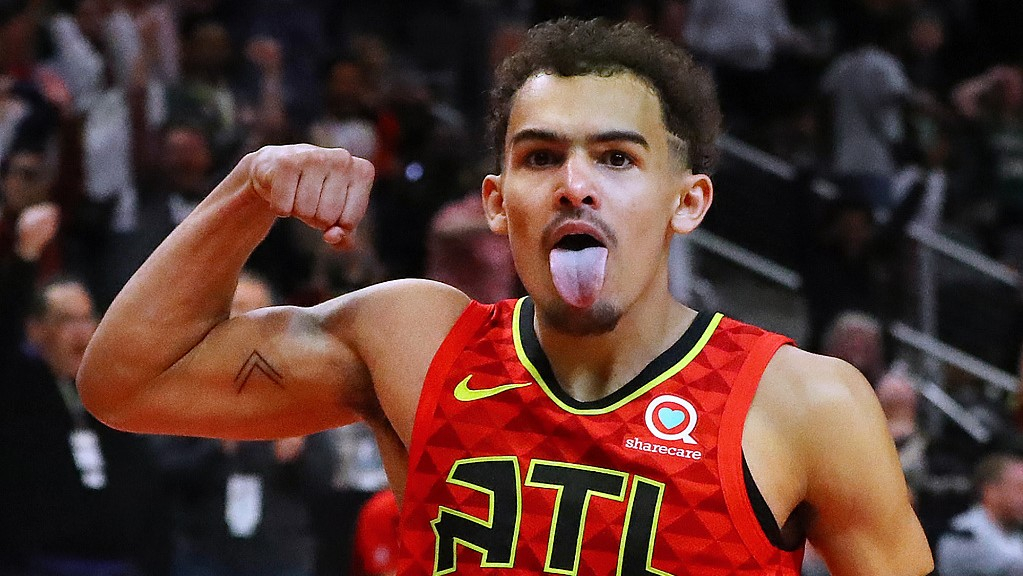
Trae Young of the Atlanta Hawks celebrates after beating the buzzer to help his team defeat the Milwaukee Bucks 136-135 in the game at the State Farm Arena, March 31, 2019. /VCG Photo
Trae Young of the Atlanta Hawks celebrates after beating the buzzer to help his team defeat the Milwaukee Bucks 136-135 in the game at the State Farm Arena, March 31, 2019. /VCG Photo
Doncic and Young were connected the moment they joined the league. They were selected by the Atlanta Hawks and the Dallas Mavericks and traded for each other; it only took them less than half a season to become the leader of their teams; they also competed against each other for Rookie of the Year honors last year.
Both have more than met peoples' expectations on them. Doncic averaged 21.2 points, 7.8 rebounds and 6.0 assists per game with a usage rate of 31.2 while Young put down 19.1 points, 3.7 rebounds and 8.1 assists on average with a usage rate of 28.3 last season. Their performances were convincing enough to be the new leaders of Dallas and Atlanta.
That's why they are more likely to hit the rookie wall.
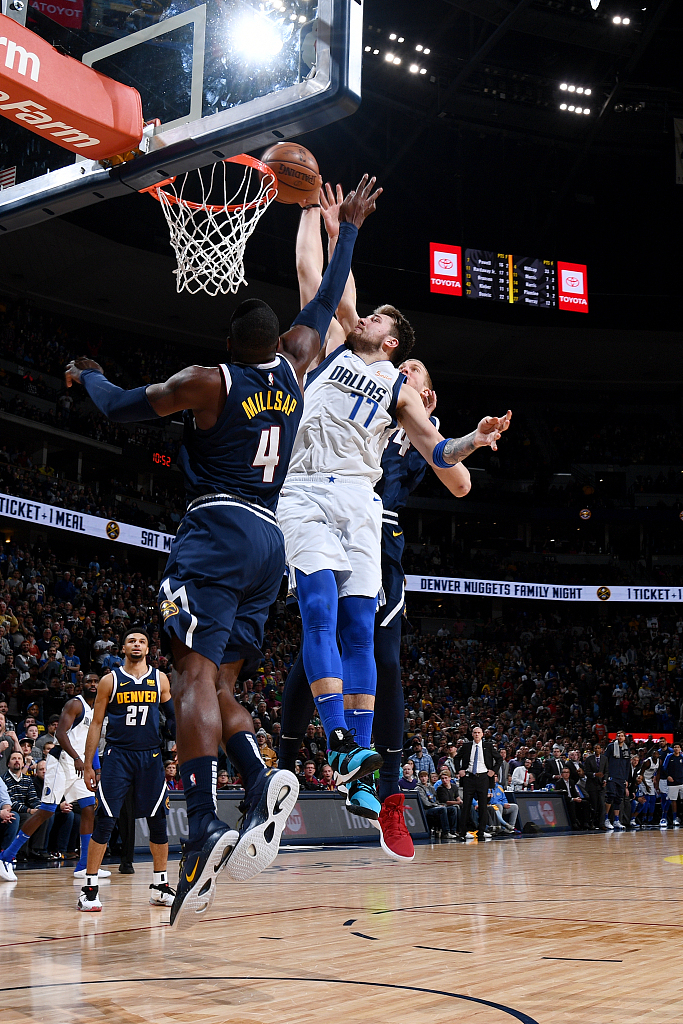
Luka Doncic #77 of the Dallas Mavericks dunks in the game against the Denver Nuggets at the Pepsi Center, March 14, 2019. /VCG Photo
Luka Doncic #77 of the Dallas Mavericks dunks in the game against the Denver Nuggets at the Pepsi Center, March 14, 2019. /VCG Photo
Their incredible performances have already placed them high on all teams' study list. Each of their playing habits, advantages and disadvantages will be put under the microscope as opponents figure out how to defend them.
Though Doncic has complete offensive skills, his contribution in this area heavily relies on the effect of his isolation play, which is mainly made up of pull-up shooting, posting up in the low block and going towards the rim. For a player like this, double teaming should be the way to limit him. In spite Doncic's good court vision, his turnovers (3.4 per game) remain a hidden danger.
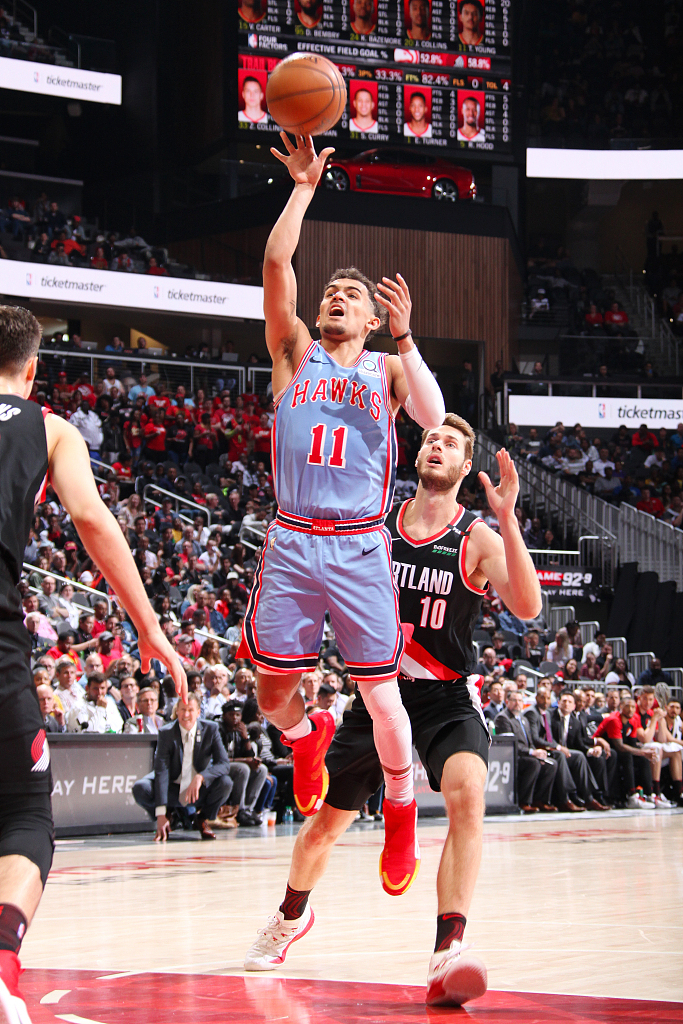
Trae Young #11 of the Atlanta Hawks shoots a floater in the game against the Portland Trail Blazers at the State Farm Arena, March 29, 2019. /VCG Photo
Trae Young #11 of the Atlanta Hawks shoots a floater in the game against the Portland Trail Blazers at the State Farm Arena, March 29, 2019. /VCG Photo
Unlike Doncic, Young built his game on screen plays. Finding teammates was not difficult for a guy who could deliver an average of 9.4 assists per 36 minutes. Moreover, Young's aggressive penetration could earn him 5.1 free throws per game, not to mention that he averaged one point per floater.
Young's problem was with his defense. As a small guard who's only 1.88 meters tall and 81 kilograms. Many guards in the league could give him a hard time in defense and more so in mismatches after screens. If he invests too much on defense, Young's firepower will be undermined.
Deandre Ayton, Jaren Jackson Jr. and Mohamed Bamba should be fine
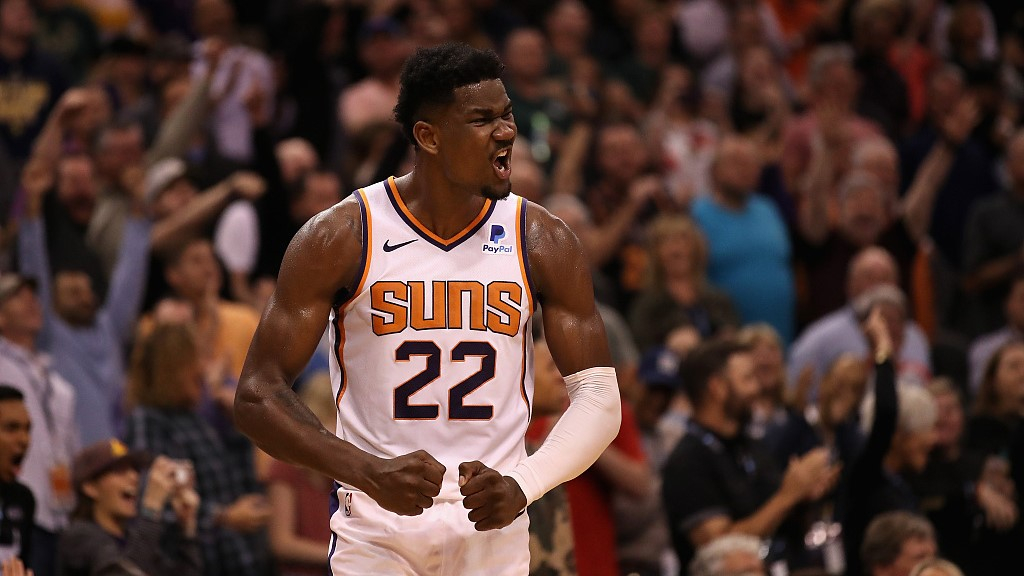
Deandre Ayton of the Phoenix Suns celebrates in the game against the Milwaukee Bucks at the Talking Stick Resort Arena, March 4, 2019. /VCG Photo
Deandre Ayton of the Phoenix Suns celebrates in the game against the Milwaukee Bucks at the Talking Stick Resort Arena, March 4, 2019. /VCG Photo

Jaren Jackson Jr. of the Memphis Grizzlies celebrates in the game against the San Antonio Spurs at the FedExForum, January 9, 2019. /VCG Photo
Jaren Jackson Jr. of the Memphis Grizzlies celebrates in the game against the San Antonio Spurs at the FedExForum, January 9, 2019. /VCG Photo
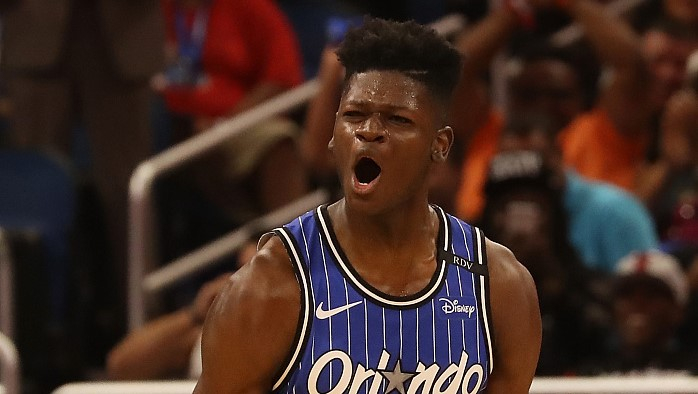
Mohamed Bamba of the Orlando Magic celebrates in the game against the Miami Heat at the Amway Center, October 17, 2018. /VCG Photo
Mohamed Bamba of the Orlando Magic celebrates in the game against the Miami Heat at the Amway Center, October 17, 2018. /VCG Photo
Having dropped a double-double of 16.3 points and 10.3 rebounds in his first season, Ayton was not even seen as a contender for Rookie of the Year for good reason. First, he's a center and with the Phoenix Suns which had no qualified orchestrator to balance the game between Ayton and Devon Booker; second, Ayton met expectations, both the good ones and bad ones.
Ayton did well on offense thanks to his size, athleticism and surprisingly solid posting up skills. His problems were clear too: he still has a lot to work on before he can adapt to NBA-level defense.
In the new season, Ayton will be playing with Ricky Rubio who should be able to help him do more on offense. Nonetheless, Booker will continue to be the Suns' main weapon, and the bigger threat in the opponents' eyes. Besides, most big men in the NBA start to impress the league and be aimed at with their defense.
Jackson Jr. and Bamba should be able to avoid the rookie wall too, but for different reasons. Unlike Ayton, Doncic and Young, the two were expected to be quality defensive, blue-collar players when they joined the league. In other words, they weren't expected to lead.
The other reason is that neither Jackson Jr. nor Bamba got enough time for people to know them. Jackson Jr. only played 26.1 minutes on average in 58 games for the Memphis Grizzlies; Bamba got more time (30.2 minutes) but he only played 29 games for the Orlando Magic before he was ruled out for the rest of the season for health reasons.
Marvin Bagley III is the unpredictable one
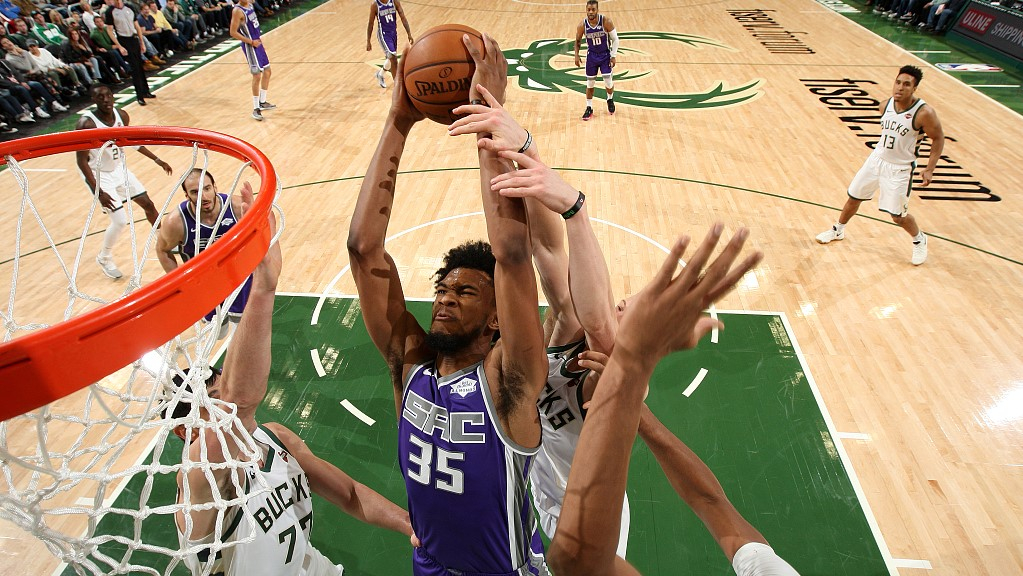
Marvin Bagley III #35 of the Sacramento Kings dunks in the game against the Milwaukee Bucks at the Fiserv Forum, November 4, 2019. /VCG Photo
Marvin Bagley III #35 of the Sacramento Kings dunks in the game against the Milwaukee Bucks at the Fiserv Forum, November 4, 2019. /VCG Photo
It took Bagley long enough to find his role on the Sacramento Kings. He lacks 3-pointers as a power forward and does not have qualified defense as a center. Unfortunately, the 20-year-old liked to handle the ball at the beginning of his first season, which led to disappointing performance for quite a while.
However, as the Kings gradually established their system, Bagley found his way to help the team. With his remarkable athleticism, Bagley made a great choice for scorers from the bench. Thanks to his leaping ability and aggressive play style, Bagley could often work as the Kings' ingenious move.
Bagley's problem is he cannot always be a bench player. As the No. 2 pick in the draft, more should be expected of him. Moreover, Sacramento will surely go for the playoffs in the new season. Though De'Aaron Fox and Buddy Hield are the leaders of the team, two guards cannot carry the team by themselves and they need bigger contributions from everyone. Since Harrison Barnes already proved that he's not a leader during time in Dallas, it's time for Bagley to decide whether he can be the game-changer.